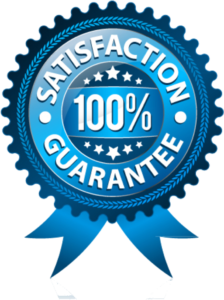Some companies only allocate corporate costs to divisions that a. are planned and under the control of division managers.
56. Some
companies only allocate corporate costs to divisions that
a. are planned and under the control of
division managers.
b. are output unit-level costs.
c. are perceived as causally related to
division activities.
d. are direct costs.
57. Not
allocating some corporate costs to divisions and products results in
a. an increase in overall corporate
profitability.
b. the sum of individual product
profitability being less than overall company profitability.
c. the sum of individual product
profitability being greater than overall company profitability.
d. a decrease in overall corporate
profitability.
58. The
greater the degree of homogeneity,
a. the greater the number of needed cost
pools.
b. the fewer the number of needed cost pools.
c. the less accurate the costs of a
particular cost object.
d. the greater the variety of
cause-and-effect relationships with the cost driver.
59. When
individual activities within a cost pool have a similar relationship with the
cost driver, those costs
a. need to be reallocated.
b. need multiple cost drivers.
c. are considered a homogeneous cost pool.
d. are considered an allocated cost pool.
60. Homogeneous
cost pools lead to
a. more accurate costs of a given cost
object.
b. more resources being assigned to that cost
object.
c. the need for more cost drivers.
d. both (a) and (c).
61. Identifying
homogeneous cost pools
a. requires judgment and should be
reevaluated on a regular basis.
b. should include the input of management.
c. should include a cost-benefit analysis.
d. should include all of the above.
62. To
allocate corporate costs to divisions, the allocation base used should
a. be an output unit-level base.
b. have the best cause-and-effect
relationship with the costs.
c. combine administrative costs and human
resource management costs.
d. allocate the full costs.
63. Corporate
administrative costs allocated to a division cost pool are MOST likely
a. output unit-level costs.
b. facility-sustaining costs.
c. product-sustaining costs.
d. batch-level costs.
64. To
manage setup costs, a corporation might focus on
a. the number of setup-hours.
b. the number of units included in each
production run.
c. the batch-level costs incurred per
setup-hour.
d. both (a) and (c).
THE FOLLOWING
INFORMATION APPLIES TO QUESTIONS 65 THROUGH 67.
The Hassan
Corporation has an Electric Mixer Division and an Electric Lamp Division. Of a
$20,000,000 bond issuance, the Electric Mixer Division utilized $14,000,000 and
the Electric Lamp Division utilized $6,000,000 for expansion. Interest costs on
the bond totaled $1,500,000 for the year.
65. What
amount of interest costs should be allocated to the Electric Mixer Division?
a. $450,000
b. $1,050,000
c. $4,200,000
d. $14,000,000
66. What
amount of interest costs should be allocated to the Electric Lamp Division?
a. $450,000
b. $1,050,000
c. $4,200,000
d. $6,000,000
67. The
above interest costs would be considered a(n)
a. output unit-level cost.
b. facility-sustaining cost.
c. product-sustaining cost.
d. batch-level cost.
68. Customers
making large contributions to the profitability of the company should
a. be treated the same as other customers
since all customers are important.
b. receive a higher level of attention from
the company than less profitable customers.
c. be charged higher prices for the same
products than less profitable customers.
d. not be offered the volume-based price
discounts offered to less profitable customers.
69. Price
discounts are influenced by
a. the volume of product purchased.
b. a desire to sell to a customer in an area
with high-growth potential.
c. negotiating skills of the sales person.
d. all of the above.
70. To
improve customer profitability, companies should track
a. only the final invoice price of a sale.
b. the volume of the products purchased by
each customer.
c. discounts taken by each customer.
d. both (b) and (c).
71. To
improve customer profitability, companies should
a. strictly enforce their volume-based price
discounting policy.
b. track discounts by customer.
c. track discounts by sales person.
d. both (b) and (c).
72. A
customer cost hierarchy categorizes costs related to customers into different
cost pools on the basis of
a. different types of cost drivers.
b. different benefits-received relationships.
c. different levels of cause-and-effect
relationships.
d. all of the above.
73. Costs incurred to process
orders would MOST likely be classified as
a. a customer output unit-level cost.
b. a customer batch-level cost.
c. a customer-sustaining cost.
d. a corporate-sustaining cost.
74. Top
management and general administration costs would MOST likely be classified as
a. a customer output unit-level cost.
b. a customer batch-level cost.
c. a customer-sustaining cost.
d. a corporate-sustaining cost.
75. The cost
of visiting customers would MOST likely be classified as
a. a customer output unit-level cost.
b. a customer batch-level cost.
c. a customer-sustaining cost.
d. a corporate-sustaining cost.
76. Costs
incurred to handle each unit sold would MOST likely be classified as
a. a customer output unit-level cost.
b. a customer batch-level cost.
c. a customer-sustaining cost.
d. a corporate-sustaining cost.
77. _______________
categorizes costs related to customers into different cost pools on the basis
of either different classes of cost drivers or different degrees of difficulty
in determining the cause-and-effect (or benefits-received) relationships.
a. Customer-profitability analysis
b. Customer revenues
c. Customer cost hierarchy
d. Price discounting
78. An
advantage of using a bar chart to visualize customer profitability is that
a. differences in commissions paid to sales
persons stand out.
b. loss customers stand out.
c. trends in the volume of purchases become
apparent.
d. all of the above are advantages.
79. Customer
actions will LEAST affect
a. customer output unit-level costs.
b. customer batch-level costs.
c. customer-sustaining costs.
d. distribution-channel costs.
80. To
reduce distribution-channel costs, a company could
a. improve the efficiency of the ordering
process.
b. make fewer customer visits.
c. eliminate distribution to retailers and
only service wholesalers.
d. do any of the above.
81. Corporate-sustaining
costs
a. are common to all individual customers.
b. have a clear cause-and-effect relationship
with several cost-allocation bases.
c. should be allocated for decisions
regarding reducing customer costs.
d. apply to all of the above.
82. The
allocation of corporate-sustaining costs is useful for
a. evaluating the performance of salespersons
with individual customer accounts.
b. motivating distribution-channel
management.
c. focusing on the cause-and-effect
relationships with the cost-allocation bases.
d. none of the above.
83. If
deciding whether to eliminate a distribution channel, allocating
corporate-sustaining costs to distribution channels
a. helps define cost reduction possibilities.
b. gives the misleading impression of
potential cost savings.
c. identifies administrative inefficiencies.
d. evaluates the effectiveness of sales
personnel.
84. When
corporate-sustaining costs are fully allocated to distribution channels then
the sum of the distribution-channel operating incomes
a. is less than company-wide operating
income.
b. is equal to company-wide operating income.
c. is greater than company-wide operating
income.
d. cannot be determined.
85. Corporate-sustaining
costs should be allocated
a. to motivate changes in customer behavior.
b. to evaluate distribution-channel managers.
c. to determine the selling price that will
cover all costs.
d. to identify the most profitable customers.56. Some
companies only allocate corporate costs to divisions that a. are planned and under the control of
division managers. b. are output unit-level costs. c. are perceived as causally related to
division activities. d. are direct costs. 57. Not
allocating some corporate costs to divisions and products results in a. an increase in overall corporate
profitability. b. the sum of individual product
profitability being less than overall company profitability. c. the sum of individual product
profitability being greater than overall company profitability. d. a decrease in overall corporate
profitability. 58. The
greater the degree of homogeneity, a. the greater the number of needed cost
pools. b. the fewer the number of needed cost pools. c. the less accurate the costs of a
particular cost object. d. the greater the variety of
cause-and-effect relationships with the cost driver. 59. When
individual activities within a cost pool have a similar relationship with the
cost driver, those costs a. need to be reallocated. b. need multiple cost drivers. c. are considered a homogeneous cost pool. d. are considered an allocated cost pool. 60. Homogeneous
cost pools lead to a. more accurate costs of a given cost
object. b. more resources being assigned to that cost
object. c. the need for more cost drivers. d. both (a) and (c). 61. Identifying
homogeneous cost pools a. requires judgment and should be
reevaluated on a regular basis. b. should include the input of management. c. should include a cost-benefit analysis. d. should include all of the above.62. To
allocate corporate costs to divisions, the allocation base used should a. be an output unit-level base. b. have the best cause-and-effect
relationship with the costs. c. combine administrative costs and human
resource management costs. d. allocate the full costs. 63. Corporate
administrative costs allocated to a division cost pool are MOST likely a. output unit-level costs. b. facility-sustaining costs. c. product-sustaining costs. d. batch-level costs. 64. To
manage setup costs, a corporation might focus on a. the number of setup-hours. b. the number of units included in each
production run. c. the batch-level costs incurred per
setup-hour. d. both (a) and (c). THE FOLLOWING
INFORMATION APPLIES TO QUESTIONS 65 THROUGH 67.The Hassan
Corporation has an Electric Mixer Division and an Electric Lamp Division. Of a
$20,000,000 bond issuance, the Electric Mixer Division utilized $14,000,000 and
the Electric Lamp Division utilized $6,000,000 for expansion. Interest costs on
the bond totaled $1,500,000 for the year.65. What
amount of interest costs should be allocated to the Electric Mixer Division? a. $450,000 b. $1,050,000 c. $4,200,000 d. $14,000,000 66. What
amount of interest costs should be allocated to the Electric Lamp Division? a. $450,000 b. $1,050,000 c. $4,200,000 d. $6,000,000 67. The
above interest costs would be considered a(n) a. output unit-level cost. b. facility-sustaining cost. c. product-sustaining cost. d. batch-level cost. 68. Customers
making large contributions to the profitability of the company should a. be treated the same as other customers
since all customers are important. b. receive a higher level of attention from
the company than less profitable customers. c. be charged higher prices for the same
products than less profitable customers. d. not be offered the volume-based price
discounts offered to less profitable customers. 69. Price
discounts are influenced by a. the volume of product purchased. b. a desire to sell to a customer in an area
with high-growth potential. c. negotiating skills of the sales person. d. all of the above.70. To
improve customer profitability, companies should track a. only the final invoice price of a sale. b. the volume of the products purchased by
each customer. c. discounts taken by each customer. d. both (b) and (c). 71. To
improve customer profitability, companies should a. strictly enforce their volume-based price
discounting policy. b. track discounts by customer. c. track discounts by sales person. d. both (b) and (c). 72. A
customer cost hierarchy categorizes costs related to customers into different
cost pools on the basis of a. different types of cost drivers. b. different benefits-received relationships. c. different levels of cause-and-effect
relationships. d. all of the above.
73. Costs incurred to process
orders would MOST likely be classified as a. a customer output unit-level cost. b. a customer batch-level cost. c. a customer-sustaining cost. d. a corporate-sustaining cost. 74. Top
management and general administration costs would MOST likely be classified as a. a customer output unit-level cost. b. a customer batch-level cost. c. a customer-sustaining cost. d. a corporate-sustaining cost. 75. The cost
of visiting customers would MOST likely be classified as a. a customer output unit-level cost. b. a customer batch-level cost. c. a customer-sustaining cost. d. a corporate-sustaining cost. 76. Costs
incurred to handle each unit sold would MOST likely be classified as a. a customer output unit-level cost. b. a customer batch-level cost. c. a customer-sustaining cost. d. a corporate-sustaining cost. 77. _______________
categorizes costs related to customers into different cost pools on the basis
of either different classes of cost drivers or different degrees of difficulty
in determining the cause-and-effect (or benefits-received) relationships. a. Customer-profitability analysis b. Customer revenues c. Customer cost hierarchy d. Price discounting 78. An
advantage of using a bar chart to visualize customer profitability is that a. differences in commissions paid to sales
persons stand out. b. loss customers stand out. c. trends in the volume of purchases become
apparent. d. all of the above are advantages. 79. Customer
actions will LEAST affect a. customer output unit-level costs. b. customer batch-level costs. c. customer-sustaining costs. d. distribution-channel costs. 80. To
reduce distribution-channel costs, a company could a. improve the efficiency of the ordering
process. b. make fewer customer visits. c. eliminate distribution to retailers and
only service wholesalers. d. do any of the above. 81. Corporate-sustaining
costs a. are common to all individual customers. b. have a clear cause-and-effect relationship
with several cost-allocation bases. c. should be allocated for decisions
regarding reducing customer costs. d. apply to all of the above. 82. The
allocation of corporate-sustaining costs is useful for a. evaluating the performance of salespersons
with individual customer accounts. b. motivating distribution-channel
management. c. focusing on the cause-and-effect
relationships with the cost-allocation bases. d. none of the above. 83. If
deciding whether to eliminate a distribution channel, allocating
corporate-sustaining costs to distribution channels a. helps define cost reduction possibilities. b. gives the misleading impression of
potential cost savings. c. identifies administrative inefficiencies. d. evaluates the effectiveness of sales
personnel. 84. When
corporate-sustaining costs are fully allocated to distribution channels then
the sum of the distribution-channel operating incomes a. is less than company-wide operating
income. b. is equal to company-wide operating income. c. is greater than company-wide operating
income. d. cannot be determined. 85. Corporate-sustaining
costs should be allocated a. to motivate changes in customer behavior. b. to evaluate distribution-channel managers. c. to determine the selling price that will
cover all costs. d. to identify the most profitable customers.




